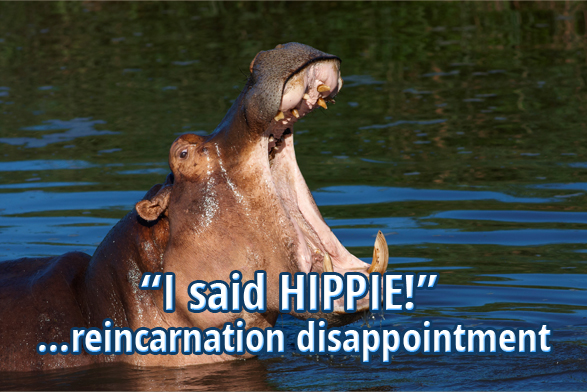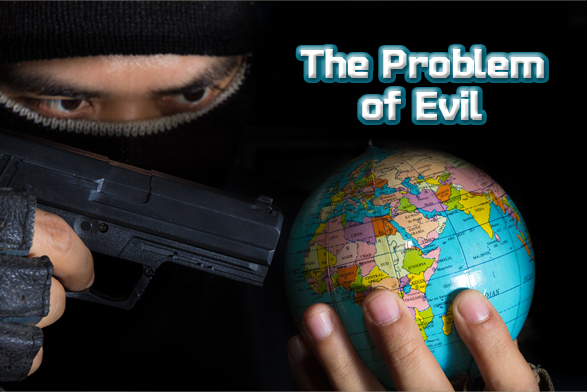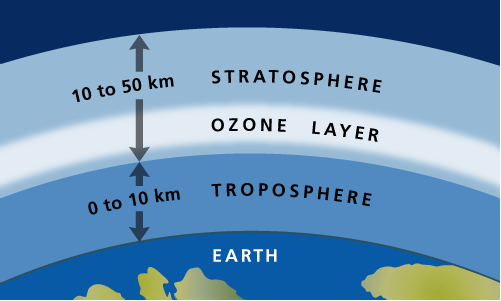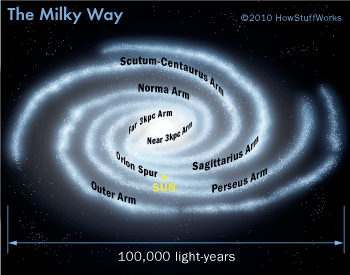Was our universe designed for human life?
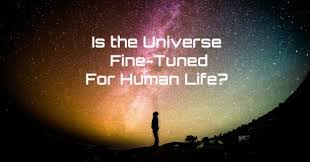
This is a question that many people are talking about these days. It’s a question that’s not going away. More and more scientists are beginning to look seriously at this. In this study, I’d like to present a very few of the many, many facts that speak of universe design. Obviously, not one fact will stand on its own, but taken together, they present a very strong case.
– Carbon molecule…we need a ‘carrier’ molecule that must be stable enough to withstand chemical & thermal interactions but not so stable that it won’t interact with other molecules to form the ‘chemistry of life’. Carbon is the only element that can do all of this. No other element is even close. When other atoms are added to carbon, like nitrogen, hydrogen and oxygen, you get the building blocks of amino acids and proteins that form the informational backbones of DNA & RNA. Carbon gives these molecules the information storage capacity that vastly exceeds all other elements.
– Water…life needs a solvent, a medium for chemical reactions. It needs to be in a liquid state fir its atom’s mobility, stable over a range of temperatures where the basic molecules of life remain intact. It has high surface tension, which gives it better capillary action in soils, trees, etc. Water is the only compound that far exceeds these requirements.
– Earth’s magnetic field…this serves to shield us from the Sun’s most harmful rays, which could fry our insides within seconds. These rays could also react with our upper atmosphere and strip away the water vapor. We would lose a lot more water to outer space, eventually making life on Earth impossible.
– Earth’s ozone layer…the ozone in the upper atmosphere shields the Sun’s more harmful rays from reaching the surface. If they did, our insides would once again be fried in seconds.
– Our planet’s temperature is conducive to human life. All other planets would be either too hot or too cold or their temperature ranges would be too extreme. Our atmosphere helps to keep the temperature range in the livable range. It only varies by some 140 degrees F (-20 to 120 degrees), which is very little compared to other planets. Earth’s distance from the Sun also helps. Venus, which is a little closer to the Sun than Earth but has a lot thicker atmosphere, has a surface temperature of about 900 degrees F (hot enough to melt lead and us). A match is around 600 degrees F.
– Surface pressure is due to a planet’s gravity and the density and composition of its atmosphere. Earth’s is 14.7 lbs/inch2. Venus has about the same gravity but a much higher atmospheric density. So its surface pressure is 93 times that of Earth’s or 1,370 lbs/inch2. If you could somehow be instantly transported to the surface of Venus, you’d be crushed instantly. That’s why all of our spacecraft have only survived for less than one hour on Venus.
– Our atmosphere is opaque enough to reflect some sunlight, thus keeping our surface temperature moderate, but clear enough for us to view the stars. It transmits most of the Sun’s radiation that’s useful for life and photosynthesis while blocking most of the lethal energy. Without photosynthesis, life couldn’t exist on Earth. Life just can’t use any type of light from any type of star. Our Sun is the right kind of star emitting the right kind of light. Our atmosphere also has the right chemicals for our type of life. We have the right amount of oxygen. If we had anymore, spontaneous fires would break out. If we had any less, we’d suffocate.
– Rotation of Earth…if the rotation of the Earth on its axis was just a little faster, the winds would be way too strong. If the rotation was a little less, they wouldn’t be strong enough. If the rotation was the same as one revolution around the Sun, Earth would always have one of its sides facing the Sun, like our Moon does facing Earth. One day would equal one year. If that happened, one side of Earth would be extremely hot and the other side would be extremely cold. Not conducive to human life at all. One side would be in perpetual daylight while the other side would be in perpetual night. Talk about messing up your sleep cycle. One side would be too hot to grow food, the other side would be too cold and not enough sunlight to grow food. The people, if there were any, on the bright side, wouldn’t be able o see any stars as there would be no night. How would the early ships learn how to navigate?
– Our solar system is just right. Jupiter and Saturn (because of their mass) suck up most of the comets and asteroids that otherwise might strike Earth.
– We’re in the right spot in our solar system. We’re in the habitable zone. Any closer to the Sun and our water would boil. Further away and water would freeze. Earth is at just the right distance from the Sun to have water be in a liquid state. Our solar system habitable zone is just 6% of our solar system.
– The Nebular Hypothesis Theory of the origin of our solar system says that the total momentum of our solar system should be in the Sun. But measurements show this to be false. 98% of this momentum is in the planets.
– Our place in our Milky Way galaxy is just right. We’re located about half way to 2/3rds of the way from the center and just a little below the plane of the galaxy. So Earth is protected from the intense radiation of the inner regions of our galaxy (just because there are more stars there). If our Sun was in the plane of the galaxy, we couldn’t see much of our own galaxy because our view would be obscured by other stars and the gas and dust associated with those stars. But because we’re below the plane of the galaxy, we can see much more of it. If we were a lot closer to the center of the galaxy, we wouldn’t experience the darkness of night that we do as the additional stars would produce more light than we get now.
– According to the Big Bang theory, when it “exploded” into space, equal amounts of matter and anti-matter would have been produced. The question that pops into mind is, “Where is all that anti-matter?” When matter and anti-matter meet, the annihilate each other. But why is there just matter left in our universe?
– One type of galaxy is the spiral arm galaxy, like our Milky Way. If our universe is really 13.7 billion years old and it only takes our galaxy 230 million years to make one rotation around itself, then our galaxy would have made about 60 rotations or less. This would have been enough for our galaxy’s spiral arms to be completely wound up to where there would be no spiral arms anymore.
– One scientist has noted that for our universe to exist as it does requires that hydrogen be converted to helium in a precise manner, specifically in a way that converts seven one thousandth of its mass into energy (0.007%). Lower that value to 0.006% and no transformation would take place so the universe would consist of only hydrogen and nothing else. Raise that value to 0.008% and bonding would be so wildly prolific that there would be no hydrogen left in the universe. In either case, if you tweak the numbers just a little, the universe as we know it, would not exist.
Physical constants
(referenced from http://godandscience.org/apologetics/designun.html) :
– strong nuclear force constant
if larger: no hydrogen would form; atomic nuclei for most life-essential elements would be unstable; thus, no life chemistry
if smaller: no elements heavier than hydrogen would form: again, no life chemistry
– weak nuclear force constant
if larger: too much hydrogen would convert to helium in big bang; hence, stars would convert too much matter into heavy elements making life chemistry impossible
if smaller: too little helium would be produced from big bang; hence, stars would convert too little matter into heavy elements making life chemistry impossible
– gravitational force constant
if larger: stars would be too hot and would burn too rapidly and too unevenly for life chemistry
if smaller: stars would be too cool to ignite nuclear fusion; thus, many of the elements needed for life chemistry would never form
– electromagnetic force constant
if greater: chemical bonding would be disrupted; elements more massive than boron would be unstable to fission
if lesser: chemical bonding would be insufficient for life chemistry
– ratio of electromagnetic force constant to gravitational force constant
if larger: all stars would be at least 40% more massive than the sun; hence, stellar burning would be too brief and too uneven for life support
if smaller: all stars would be at least 20% less massive than the sun, thus incapable of producing heavy elements
– ratio of electron to proton mass
if larger: chemical bonding would be insufficient for life chemistry
if smaller: same as above
– ratio of number of protons to number of electrons
if larger: electromagnetism would dominate gravity, preventing galaxy, star, and planet formation
if smaller: same as above
– expansion rate of the universe
if larger: no galaxies would form
if smaller: universe would collapse, even before stars formed
– entropy level of the universe
if larger: stars would not form within proto-galaxies
if smaller: no proto-galaxies would form
– mass density of the universe
if larger: overabundance of deuterium from big bang would cause stars to burn rapidly, too rapidly for life to form
if smaller: insufficient helium from big bang would result in a shortage of heavy elements
– velocity of light
if faster: stars would be too luminous for life support if slower: stars would be insufficiently luminous for life support
– initial uniformity of radiation
if more uniform: stars, star clusters, and galaxies would not have formed
if less uniform: universe by now would be mostly black holes and empty space
– average distance between galaxies
if larger: star formation late enough in the history of the universe would be hampered by lack of material
if smaller: gravitational tug-of-wars would destabilize the sun’s orbit
– density of galaxy cluster
if denser: galaxy collisions and mergers would disrupt the sun’s orbit
if less dense: star formation late enough in the history of the universe would be hampered by lack of material
– average distance between stars
if larger: heavy element density would be too sparse for rocky planets to form
if smaller: planetary orbits would be too unstable for life
– fine structure constant (describing the fine-structure splitting of spectral lines)
if larger: all stars would be at least 30% less massive than the sun
if larger than 0.06: matter would be unstable in large magnetic fields
if smaller: all stars would be at least 80% more massive than the sun
– decay rate of protons
if greater: life would be exterminated by the release of radiation
if smaller: universe would contain insufficient matter for life
– 12C to 16O nuclear energy level ratio
if larger: universe would contain insufficient oxygen for life
if smaller: universe would contain insufficient carbon for life
– ground state energy level for 4He
if larger: universe would contain insufficient carbon and oxygen for life
if smaller: same as above
– decay rate of 8Be
if slower: heavy element fusion would generate catastrophic explosions in all the stars
if faster: no element heavier than beryllium would form; thus, no life chemistry
– ratio of neutron mass to proton mass
if higher: neutron decay would yield too few neutrons for the formation of many life-essential elements
if lower: neutron decay would produce so many neutrons as to collapse all stars into neutron stars or black holes
– initial excess of nucleons over anti-nucleons
if greater: radiation would prohibit planet formation
if lesser: matter would be insufficient for galaxy or star formation
– polarity of the water molecule
if greater: heat of fusion and vaporization would be too high for life
if smaller: heat of fusion and vaporization would be too low for life; liquid water would not work as a solvent for life chemistry; ice would not float, and a runaway freeze-up would result
– supernovae eruptions
if too close, too frequent, or too late: radiation would exterminate life on the planet
if too distant, too infrequent, or too soon: heavy elements would be too sparse for rocky planets to form
– white dwarf binaries
if too few: insufficient fluorine would exist for life chemistry
if too many: planetary orbits would be too unstable for life
if formed too soon: insufficient fluorine production
if formed too late: fluorine would arrive too late for life chemistry
– ratio of exotic matter mass to ordinary matter mass
if larger: universe would collapse before solar-type stars could form
if smaller: no galaxies would form
– number of effective dimensions in the early universe
if larger: quantum mechanics, gravity, and relativity could not coexist; thus, life would be impossible
if smaller: same result
– number of effective dimensions in the present universe
if smaller: electron, planet, and star orbits would become unstable
if larger: same result
-mass of the neutrino
if smaller: galaxy clusters, galaxies, and stars would not form
if larger: galaxy clusters and galaxies would be too dense
-size of the relativistic dilation factor
if smaller: certain life-essential chemical reactions will not function properly
if larger: same result
-uncertainty magnitude in the Heisenberg uncertainty principle
if smaller: oxygen transport to body cells would be too small and certain life-essential elements would be unstable
if larger: oxygen transport to body cells would be too great and certain life-essential elements would be unstable
A note about exponents (you’ll be seeing them down below)…
100 = 10 x 10 = 10(2) or 10² 1,000(one thousand) = 10 x 10 x 10 = 10(3) or 10³ or 1 followed by 3 zeros
1,000,000 (one million) = 10 x 10 x 10 x 10 x 10 x 10 = 10(6) or 1 followed by 6 zeros
So if you have one chance in a million of something happening, you have one chance in 10(6) of that thing happening.
I won’t even go into the biological, molecular and informational aspects of a cell. These probabilities of everything naturally arising are astronomically small. But here are a few quotes to wet your whistle…
It is futile to pretend to the public that we understand how an amoeba evolved into a man, when we cannot tell our students how a human egg produces a skin cell or a brain cell! – Dr Jérôme J. Lejeune
Darwinism was an interesting idea in the 19th century, when handwaving explanations gave a plausible, if not properly scientific, framework into which we could fit biological facts. However, what we have learned since the days of Darwin throws doubt on natural selection’s ability to create complex biological systems – and we still have little more than handwaving as an argument in its favor. – Dr. Colin Reeves
I am absolutely convinced of the lack of true scientific evidence in favour of Darwinian dogma. Nobody in the biological sciences, medicine included, needs Darwinism at all. Darwinism is certainly needed, however, in order to pose as a philosopher, since it is primarily a worldview. And an awful one, as George Bernard Shaw used to say. – Dr. Raul Leguizamon
“To postulate that the development and survival of the fittest is entirely a consequence of chance mutations seems to me a hypothesis based on no evidence and irreconcilable with the facts. These classical evolutionary theories are a gross over-simplification of an immensely complex and intricate mass of facts, and it amazes me that they are swallowed so uncritically and readily, and for such a long time, by so many scientists without murmur of protest.” (Sir Ernest Chain, Nobel Prize winner, as cited in “Was Darwin Wrong” by Francis Hitching, LIFE magazine, April 1982, p.50)
“We have all heard of The Origin of Species, although few of us have had time to read it…A casual perusal of the classic made me understand the rage of Paul Feyerabend…I agree with him that Darwinism contains ‘wicked lies’; it is not a ‘natural law’ formulated on the basis of factual evidence, but a dogma, reflecting the dominating social philosophy of the last century.” Kenneth J. Hsu, “Sedimentary Petrology and Biologic Evolution,” Journal of Sedimentary Petrology 56 (September 1986): p730
The probability of life originating from accident is comparable to the probability of the unabridged dictionary resulting from an explosion in a printing shop – Dr. Edwin Conklin, evolutionist, professor of biology, Princeton University,Cliffe Knechtle (1986) Give Me an Answer, p. 70
Few people outside of genetics or biochemistry realize that evolutionists still can provide no substantive details at all about the origin of life, and particularly the origin of genetic information in the first self-replicating organism….How did huge information-rich molecules arise before natural selection? Exactly how did the genetic code linking nucleic acids to amino acid sequence originate? Clearly the origin of life – the foundation of evolution – is still virtually all speculation, and little or no fact. — Dr. Christopher Williams, professor of biochemistry at Ohio State University
“My attempts to demonstrate evolution by an experiment carried on for more than 40 years have completely failed…..It is not even possible to make a caricature of an evolution out of paleobiological facts…The idea of an evolution rests on pure belief.” – Dr. Nils Heribert-Nilsson, noted Swedish botanist and geneticist, of Lund University
“The probability for the chance of formation of the smallest, simplest form of living organism known is 1 to 10(-340,000,000). This number is 1 to 10 to the 340 millionth power! The size of this figure is truly staggering, since there is only supposed to be approximately 10(-80)… (10 to the 80th power) electrons in the whole universe!” – Professor Harold Morowitz
“The occurrence of any event where the chances are beyond one in ten followed by 50 zeros is an event which we can state with certainty will never happen, no matter how much time is allotted and no matter how many conceivable opportunities could exist for the event to take place.” – Dr. Emile Borel, who discovered the laws of probability
“Neo-Darwinists say that new species emerge when mutations occur and modify an organism. I was taught over and over again that the accumulation of random mutations led to evolutionary change—led to new species. I believed it until I looked for evidence.” Echoing the arguments of many ID proponents, Margulis maintains that “new mutations don’t create new species; they create offspring that are impaired.”
In a 2003 book co-authored with Dorion Sagan (the son of Carl), she elaborates:
” This Darwinian claim to explain all of evolution is a popular half-truth whose lack of explicative power is compensated for only by the religious ferocity of its rhetoric. Although random mutations influenced the course of evolution, their influence was mainly by loss, alteration, and refinement….Mutations, in summary, tend to induce sickness, death, or deficiencies. No evidence in the vast literature of heredity changes shows unambiguous evidence that random mutation itself, even with geographical isolation of populations, leads to speciation.”—LYNN MARGULIS, A member of the U.S. National Academy of Sciences
Evolutionary biologist Francisco Ayala notes that, from a Darwinian perspective, each step is highly improbable. Taking into account just a few of these steps, Ayala determined that the probability of intelligent life arising from bacteria to be less than one chance in 10(1,000,000)… (that’s one chance in 1 followed by one million zeros).
Physicists John Barrow, Brandon Carter, and Frank Tipler calculated the probability of all 16 steps occurring to be less than one chance in 10(24,000,000)… (that’s one chance in 1 followed by 24 million zeros). To get a feel for how miniscule this probability is, it is roughly equivalent to someone winning the California lottery 3,000,000 consecutive times where that individual purchases just one lottery ticket each time. Realistically, this probability is indistinguishable from someone winning the California lottery 3,000,000 consecutive times where the individual purchases no tickets at all.
(Quotes from Reason to Believe website, Dr. Hugh Ross, astro-physicist)
Scientists have generally agreed on a statistical definition of the word ‘impossible’. If something doesn’t have one chance in 10(53) power (that’s one followed by 53 zeros) of happening, it will NEVER happen. Ten times ‘impossible’ is one chance in 10(54) power. I think you can see that evolution, even by some evolutionists own figures, will NEVER happen.
We haven’t even talked about human consciousness yet. Evolution is trying to answer how it developed but so far, it cannot. There are so many more points that I could bring up. The above ones are but a few. If you believe that these things all happened ‘naturally’, you have to ask yourself the question, how did all these things know how to form? Who or what directed them to form in this exact way? Why are so many of these values so precise? Just saying that they naturally evolved this way is NOT an answer. You’d have to specify how they evolved this way and that’s what naturalism cannot do.
But if you were walking thru a forest and came upon a cell phone, you wouldn’t assume that it made itself naturally. You’d assume that it was made by someone. And that is the difference between evolution/big bang theories and intelligent design theory.
I hope in these few pages, you will have seen a tiny fraction of the problems arising from the Big Bang and Evolution theories. While some facts do lead to belief in evolution and the Big Bang theories, more and more facts & probabilities are leading away from them both.
It does indeed seem to postulate that our universe is intelligently designed for human life.
References:
Books;
The Privileged Planet by Guillermo Gonzalez & Jay Richards
Examine the Evidence by Ralph Muncaster
The Case for a Creator by Lee Strobel
Time and Eternity by Werner Gitt
Websites:
http://godandscience.org/apologetics/designun.html
https://creation.com/the-universe-is-finely-tuned-for-life
http://kgov.com/fine-tuning-of-the-universe
For His Kingdom,
Dave Maynard
http://BSSSB-LLC.com
–


